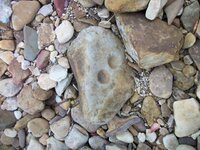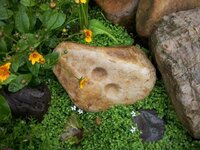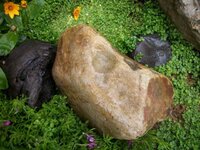A
Atlantis0077
Guest
Morning,
Here's a photo of a nice nut stone I found at the lake several years ago. It was laying upside down and caught my eye because it was of a different type of stone than is normally found there. I picked it up and as I was lifting it the cup of dirt fell out of the hole on the opposite side....The stone weighs about 25 pounds. One of the nicer ones I have in my collection. Love the mineral lines through the stone.
Happy Hunting,
Atlantis
Here's a photo of a nice nut stone I found at the lake several years ago. It was laying upside down and caught my eye because it was of a different type of stone than is normally found there. I picked it up and as I was lifting it the cup of dirt fell out of the hole on the opposite side....The stone weighs about 25 pounds. One of the nicer ones I have in my collection. Love the mineral lines through the stone.
Happy Hunting,
Atlantis
Attachments
Upvote
0


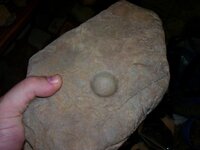
 What's a "nut stone"? I'm guessing that the basic assumption is that this was used to crack nuts with? If so is there any signs of wear/usage? Was the hole drilled intentionally to hold the nut in place or is the hole the result of so many nuts being cracked in one spot that it wore a hole into it? What kind of nuts? Are these the same as the "fire rocks"? Atlantis, if you have other ones could you scan them or take pictures? I would like to compare some.. (if/when you have the time) thanks!
What's a "nut stone"? I'm guessing that the basic assumption is that this was used to crack nuts with? If so is there any signs of wear/usage? Was the hole drilled intentionally to hold the nut in place or is the hole the result of so many nuts being cracked in one spot that it wore a hole into it? What kind of nuts? Are these the same as the "fire rocks"? Atlantis, if you have other ones could you scan them or take pictures? I would like to compare some.. (if/when you have the time) thanks!  Been out looking lately?
Been out looking lately?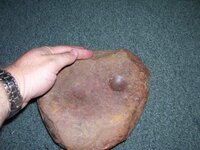
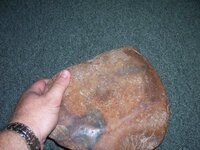
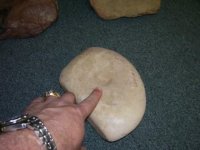
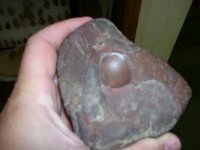



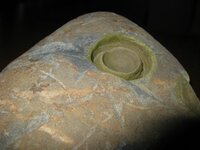
 ?? i think they sometimes used hammer stones to peck out the depression for a nuting stone. Terry
?? i think they sometimes used hammer stones to peck out the depression for a nuting stone. Terry